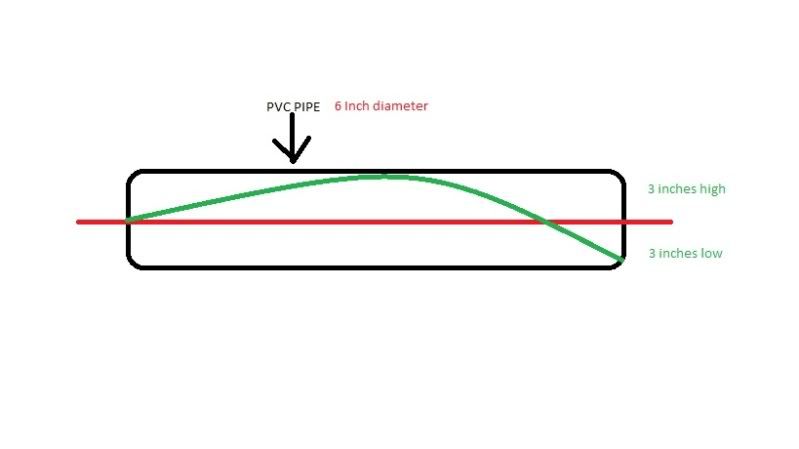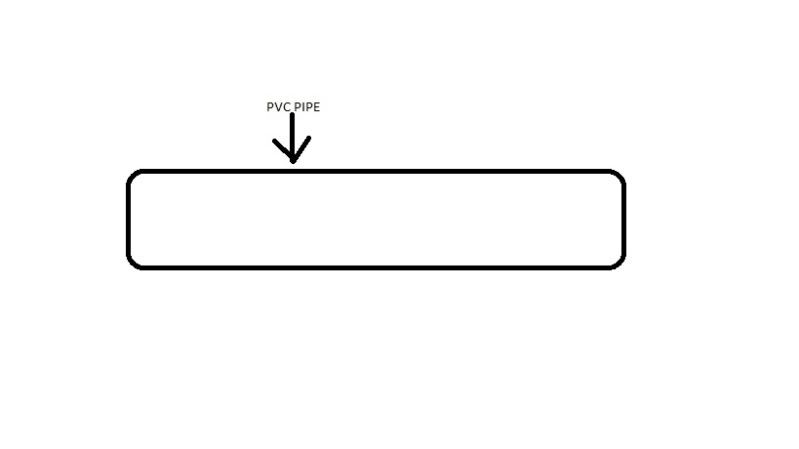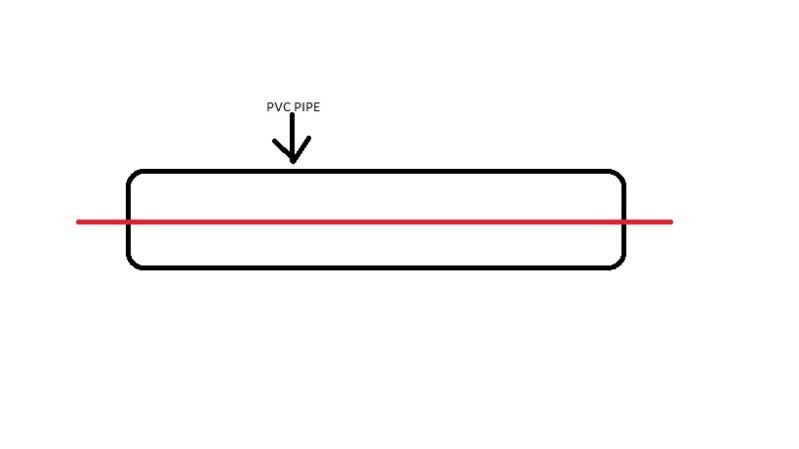Originally Posted By: Toby10Ya Nd,
Clear as mud! lol
I guess the only critters that will get the brunt of this rifle will be yote's, and if I'm lucky an unsuspecting crow that is grounded.
Thanks for being patient with a noob
Brian
Kind of basic explanation so no offense meant.
Ok, this is easier if I can sketch it out, but you'll have to visualize. So close your eyes and imagine... wait, you can't close your eyes and read this so open them back up. I SAID OPEN... hehehehe
Ignore shooting over any range for a minute and think about a long piece of PVC pipe with an opening of 6" laying perfectly level.
That's going to represent a total target size of 6", or MOD (Minute Of Deer). You get to stand on the left, the target is the on the right.
Your POA (Point Of Aim) is going to be the red line, holding dead on to center of the target.
Pulling the trigger the bullet travels in an arc, green line. The goal of determining a MPBR is to find how far out the target can be where the bullet will not travel any higher than 1/2 the total target height and how far out the target can be before dropping more than 1/2 the total target height.

The distance your round will do this is the maximum point blank range. That is hold dead on with no holdover or holdunder, and still score a 'hit' on the target. Bad for target shooting, but when all you're after is a 'hit' in a vital area it works really well. So for an example with the above idea, the MPBR may be 287 yards for a given round using that target size. So anywhere from the muzzle of your rifle out to 287 yards, all you have to do is hold dead on and pull the trigger because the bullet NEVER crosses higher or lower than your actual target until it passes beyond the MPBR. Much easier IMO than trying to determine exactly how many clicks to adjust, or guessing how much to hold over. Just point and click, start field dressing.
Now the larger your actual target is the larger the high and low spot will be. If you have a 12" target the bullet can rise clear up to 6" and drop below 6". Using the exact same round with the larger acceptable arc, the MPBR may be 370 yards. But with a smaller target like a prairie dog, 2" lets say, the exact same round may have a MPBR of 140 yards.
So in theory you can place 1 round downrange shooting through an actual pipe the diameter of your acceptable target size.
It takes a bit to really grasp. The last guy I actually taught it to placed 2 shots on 2 elk on total faith. 2 drastically different ranges and 2 dead elk along with 1 amazed friend. But physics is physics and doesn't change because of who's pulling the trigger.






